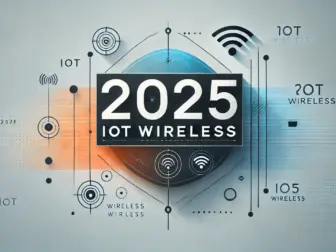Tag - UWB
Blog, IoT Protocols and Interoperability , December 27, 2024 , connectivity trends, iot, IoT modules, LoRa, LTE Cat 1, LTE-M, NB-IoT, Sigfox, UWB, wireless technologies
Blog , June 19, 2024 , Ultra-Wideband, UWB, UWB Communication, UWB Positioning, UWB Technology
Understanding Ultra-Wideband (UWB) Technology: The Future of Wireless Communication
Ultra-Wideband (UWB) technology is a revolutionary wireless communication technology that is rapidly gaining traction in various industries. With its ability to transmit large amounts of data over short distances, UWB is poised to revolutionize the way we communicate, connect devices, and transfer information.
UWB works by sending out short pulses of radio waves across a wide spectrum of frequencies, allowing for high-speed data transmission over short distances. This makes it ideal for applications such as indoor positioning, asset tracking, data transfer, and even wireless charging.
One of the key benefits of UWB technology is its high level of precision in location tracking. By measuring the time it takes for a signal to travel between two devices, UWB can accurately determine the distance between them with centimeter-level accuracy. This makes it ideal for applications such as indoor navigation, augmented reality, and location-based services.
Another advantage of UWB technology is its low power consumption, making it ideal for battery-operated devices. This allows for efficient communication between devices without draining their power source, making UWB a viable option for IoT devices, wearables, and other battery-powered devices.
In addition to its high data transfer speeds and precision location tracking, UWB technology also offers enhanced security features. The short pulses of radio waves used in UWB communication make it difficult for eavesdroppers to intercept or interfere with the signal, providing a secure communication channel for sensitive data.
The potential applications of UWB technology are vast and diverse. In healthcare, UWB can be used for monitoring patients, tracking medical equipment, and improving communication between healthcare professionals. In manufacturing, UWB can streamline operations, automate processes, and enhance productivity. In retail, UWB can enable personalized shopping experiences, improve inventory management, and optimize store layouts.
As UWB technology continues to evolve and expand, we can expect to see even more innovative applications in the future. From smart homes and smart cities to autonomous vehicles and industrial automation, UWB has the potential to transform the way we live, work, and interact with the world around us.
In conclusion, Ultra-Wideband (UWB) technology is a game-changing technology that is set to revolutionize the way we communicate, connect devices, and transfer information. With its high data transfer speeds, precision location tracking, low power consumption, and enhanced security features, UWB is poised to become the future of wireless communication. As the technology continues to evolve and expand, we can expect to see a wide range of innovative applications that will shape the way we live and work in the years to come.

